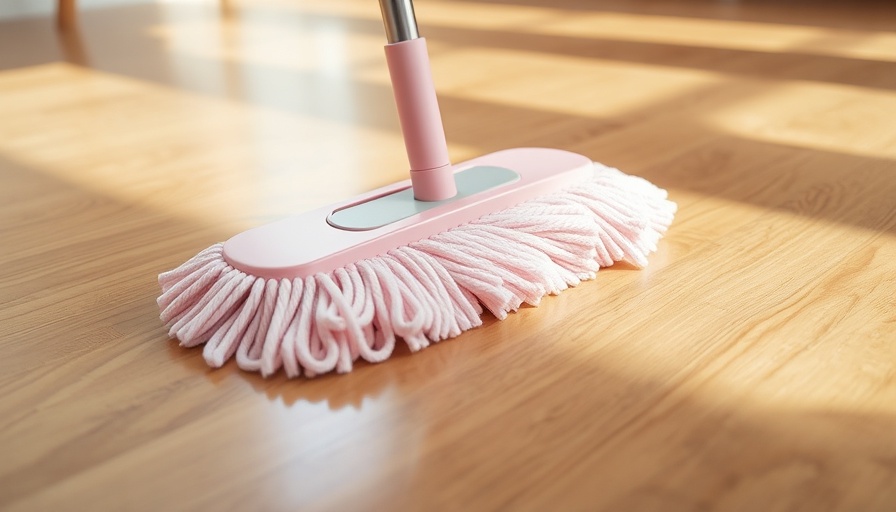
Mastering the Art of Vinyl Plank Cleaning
With the rising popularity of vinyl plank flooring as an attractive and cost-effective alternative to hardwood, understanding how to properly clean and maintain these surfaces has become essential for homeowners. Unlike traditional wood floors, vinyl planks are designed for durability but require the right care to keep them looking pristine for years. This guide explores how you can effectively clean your vinyl plank flooring without causing damage.
What is Vinyl Plank Flooring?
Vinyl plank flooring, often referred to as luxury vinyl flooring, is a synthetic product made from polyvinyl chloride (PVC). Its durability, water resistance, and affordability make it an excellent choice for those looking to achieve the aesthetic appeal of wood without the associated costs. However, despite its resilience, it's still crucial to adopt a cautious approach in maintaining these surfaces to avoid scratches and buildup.
Gather Your Cleaning Arsenal
Before diving into cleaning, gather essential tools and materials to streamline the process. You’ll need:
- Soft-bristled broom or vacuum cleaner
- Wet mop and bucket
- Commercial cleaner specifically for vinyl flooring, or ingredients to create a DIY solution (like vinegar, baking soda, and warm water)
- Microfiber cloths and scrubbing pads
- Safety equipment, such as rubber gloves and a mask for chemical cleaning solutions
Step-by-Step Cleaning Process
Step 1: Remove Loose Dirt
Start by sweeping or vacuuming the floor to eliminate loose dirt and debris. In high-traffic areas, this should be done daily to prevent dirt build-up that can scratch the floor over time. Avoid using vacuum cleaners with beater bars as they can damage the vinyl.
Step 2: Choose the Right Cleaner
Select a cleaning solution that’s safe for vinyl flooring. While commercial cleaners are convenient, many homeowners prefer natural solutions. For example, a solution of one cup of vinegar mixed with a gallon of warm water is both effective and environmentally friendly.
Step 3: Mop Gently
Using a damp mop, apply your cleaning solution across the floor, taking care to follow the grain of the planks. Ensure your mop is not soaking wet, as excess water can seep into seams and lead to bubbling or warping.
Step 4: Dry the Surface
After mopping, it’s essential to dry the floor with a clean, dry microfiber cloth. This helps prevent streaking and eliminates any dampness that can lead to slips or further staining.
Keeping Your Vinyl Floors in Top Shape
Regular maintenance is key to preserving the beauty of your flooring. Here are some tips to keep your vinyl planks looking their best:
- Mop weekly in high-traffic areas and every couple of weeks elsewhere. Promptly clean spills to avoid staining.
- Utilize area rugs in heavy-use zones to protect against wear and tear.
- Apply furniture protectors under heavy items to avoid dents and scratches.
- Avoid using abrasive cleaners, scrub brushes, or tools that could harm the surface.
- Consider using a no-wax finish to maintain sheen without buildup.
Deal with Stains Efficiently
Stains are unavoidable, but knowing how to handle them promptly can save your floors. For stubborn stains, a paste of baking soda and water can be gently rubbed into the area with a soft cloth. Follow up with a damp cloth to remove residues. In the case of tougher stains like ink or pet mishaps, don’t hesitate to use mineral spirits or rubbing alcohol, but test any product in a hidden area first to ensure it does not discolor the vinyl.
Future-Proofing Your Floors
As you master the art of cleaning vinyl plank flooring, remember that investing time in maintenance not only clears dirt but also extends the life of your flooring. By regularly following these cleaning techniques and precautions, you’ll enhance the longevity of your beautiful floors, allowing them to shine for years without incurring costly repairs or replacements.
 Add Row
Add Row  Add
Add 




Write A Comment